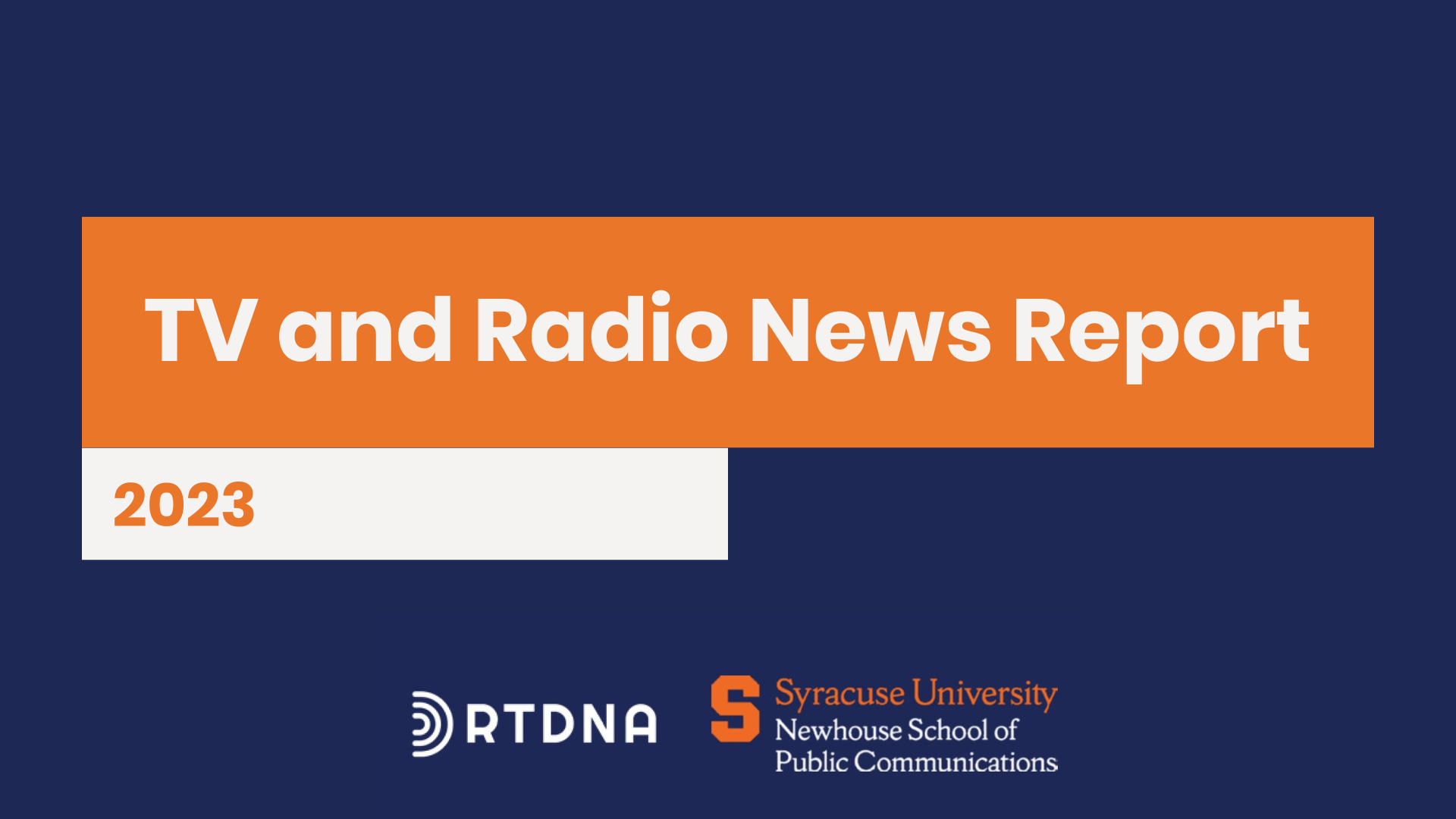RTDNA-Syracuse Survey: Local News Minutes Increase Across the Board

By Bob Papper and Keren Henderson
It seems like every year, and it pretty much is, the latest RTDNA/Newhouse School at Syracuse University Survey shows another record-high amount of local news.
Both local TV and radio stations reported double digit increases in the minutes of local news they broadcast in a given day: 18 minutes more per weekday for TV and 21.2 minutes for radio.
Here is a breakdown by medium:
TV
The median amount remained the same, but the average rose by 18 minutes per weekday. The medians for Saturday and Sunday also stayed the same, but the average amount fell by 6 minutes Saturday and 6 minutes on Sunday. Overall, that means an extra 78 minutes of local news per week.
Every market size except the smallest went up in local news. Every staff size except the smallest either went up or stayed the same.
Last year, a surprising amount of TV news directors in top 100 markets expected to add news. And they did. That situation is repeating itself, so it’ll be interesting in a year to see if it happens again. Note that no news directors expect to cut news in 2023, although, as this is written, there are reports that at least some Sinclair stations plan to cut newscasts (and staffing).
Related: Download the 2023 TV Salary Report
Radio
Overall, 68.3% of all radio stations in the Survey report running local news: 73% of AM stations and 66.6% of FM stations. The overall percentage running news is up 3 points from a year ago, with AM up more than 5 points and FM up by 2. That kind of one-year increase suggests that stations that stopped local news because of COVID may well have brought local news back.
There has been a significant swing in the percentages of commercial versus non-commercial stations that run local news. This year, we see a 10 point drop in the percentage of non-commercial stations running local news – down from 72.5% a year ago to 62.7% this time around. Commercial stations, by contrast, edged up a couple points to 66.2%. The drop in non-commercial stations is surprising, and we have no good explanation for it. It’s possible that the difference is that more non-commercial stations are reporting on their digital subchannels which tend to run classical music or jazz – and not news.
There is a common perception that locally owned radio stations are more likely to produce local news than stations that are not locally owned. But that’s never been the case every time we’ve looked at the issue, and it’s not the case this year, either. Overall, 74.9% of locally owned stations run local news, but 83.9% of non-locally owned stations run local news. That’s down slightly among locally owned stations, and up about 7 points for stations with non-local ownership.
Related: Download the 2023 Radio Salary Report
Bob Papper is Research Professor of Broadcast and Digital Journalism at Syracuse University and has worked extensively in radio and TV news.
Keren Henderson is Associate Professor of Broadcast and Digital Journalism at Syracuse University and has worked in local TV news as a producer and video editor.
This research was supported by the S. I. Newhouse School of Public Communications at Syracuse University and the Radio Television Digital News Association.
About the Survey
The RTDNA/Newhouse School at Syracuse University Survey was conducted in the fourth quarter of 2022 among all 1,812 operating, non-satellite television stations and a random sample of 4,819 radio stations. Valid responses came from as many as 1,365 television stations (75.3%) and 777 radio news directors and general managers representing 2,514 radio stations. Some data sets (e.g. the number of TV stations originating local news, getting it from others and women TV news directors) are based on a complete census and are not projected from a smaller sample.
